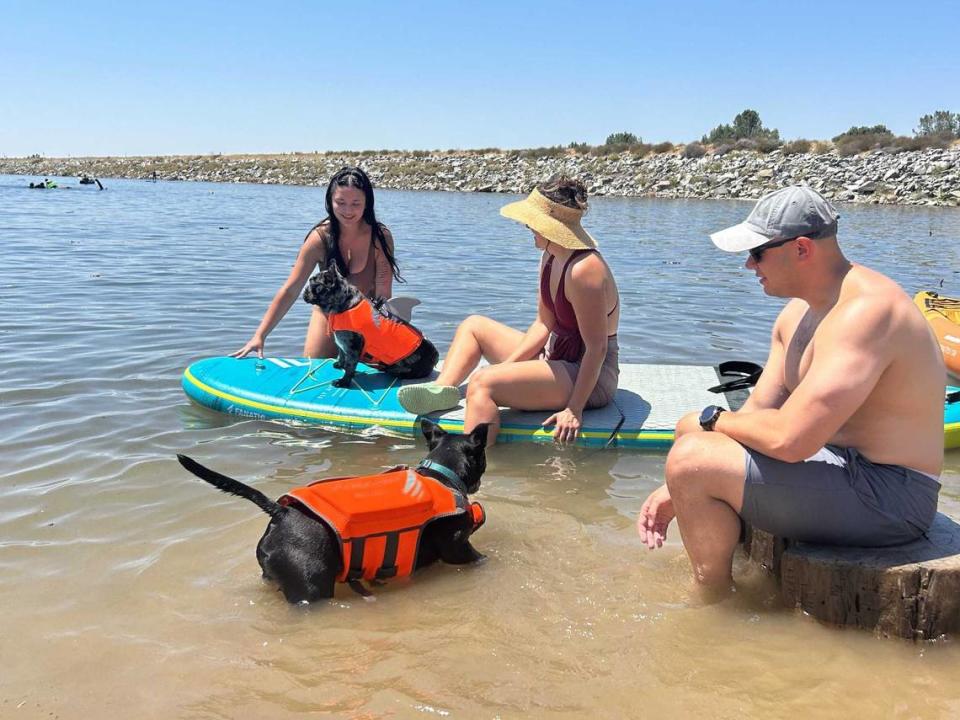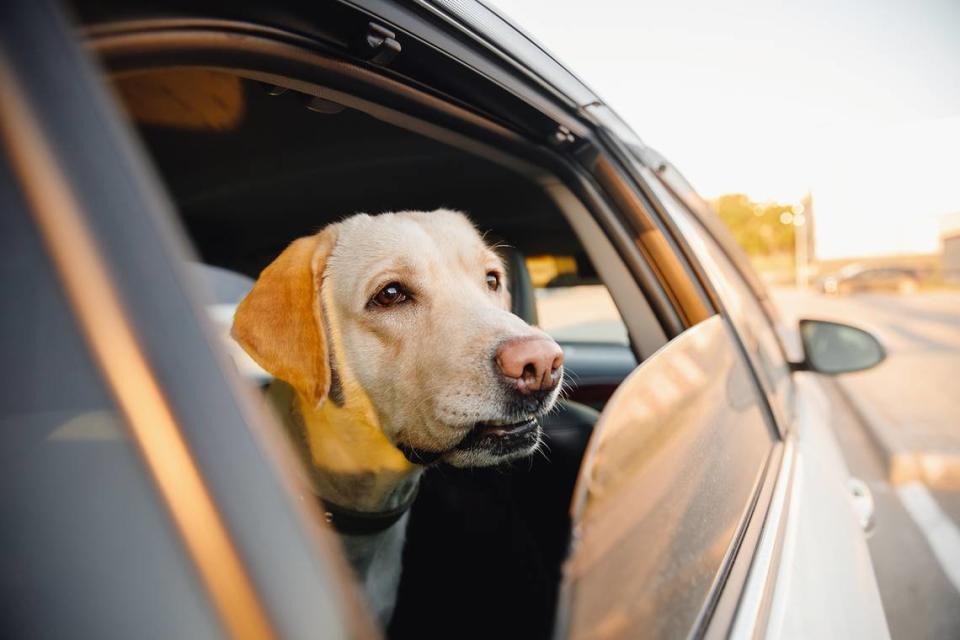Is it safe to walk your dog during California heat wave? How hot weather can harm pets
As triple-digit temperatures scorch parts of California, pet owners may be wondering if it’s safe to venture out with their pets.
Heat stroke is common among dogs and cats who have been left in poorly ventilated spaces during hot weather.
So far this year, 80 dogs, cats and other companion animals have died in the United States due to hot weather, according to People for the Ethical Treatment of Animals. That’s compared to 163 heat-related animal deaths in 2023.
Unlike humans, the animals are unable to perspire and can quickly overheat if left in high temperature conditions.
Here’s what you need to know about caring for dogs and cats when the temperature rises.

How can pets get sick during hot weather?
According to the American Kennel Club, a dog can experience heat stroke, also called hyperthermia, if its internal body temperature exceeds 105 degrees. The animal’s normal temperature is generally 101.
“When a dog’s temperature rises to 108 degrees, or to 106 degrees for a cat, they can suffer irreparable organ damage, or worse,” Erin Katribe, medical director of Best Friends Animal Society, said in a news release.
The biggest threat to dogs is leaving them in hot cars, the Best Friends Animal Society said, even with the windows rolled down.
“If they’re inside a car, recycling hot air, panting gives no relief, and heat stroke can occur quickly,” the Best Friends Animal Society said. “Many studies show that the temperature inside a car on a 70-degree day can rise to 89 degrees in ten minutes, and to 104 degrees in as little as a half hour.”
The best advice is to simply leave dogs and cats at home with plenty of air conditioning and cold water.

Is it safe to take my dog for a walk during a heat wave?
If your pet needs exercise, it’s best to take them out in the early morning or late evening when temperatures are coolest.
Keep pets indoors during the hottest parts of the day.
Before setting out, test the temperature of the pavement by holding your palm against it for three seconds.
During days when the weather is 95 degrees, concrete exposed to sunlight can reach 125 degrees, while blacktop surfaces can top out around 140 degrees, according to data from the University of Georgia.

Packed dirt and sand can also reach temperatures hot enough to burn animal’s padded feet.
If dogs need to use the bathroom outdoors, owners should make sure there is plenty of shade available and limit the amount of time their dog spends outside.
Even when inside, dogs should be provided cold water. No matter how thirsty they are, dogs will refuse hot or even lukewarm water, according to the Best Friends Animal Society.
Animals with thin to no fur or bald spots should be covered in sunscreen when taken outside, but owners should consult their veterinarian first.

What are heat stroke symptoms in dogs?
Heat stroke is life threatening for dogs and can lead to serious health complications if the illness is caught too late, the American Kennel Club said.
According to the Veterinary Centers of America Animal Hospital, signs of heat stroke in dogs include:
Heavy panting
Drooling
Rapid breathing
Very hot skin
Higher-than-normal heart rate
Seizures
Lethargic or disoriented appearance
If the heat exposure continues, the kennel club said that the dog’s condition will worsen with symptoms including white or blue gums, drop in blood pressure, hyperventilation and muscle tremors.

Are certain dog breeds more prone to heat stroke?
Some kinds of dogs are more likely to get heat-related illnesses than others.
“Dogs with a restricted airway such as brachycephalic breeds (flat-faced dogs such as pugs, boxers, and bulldogs) are at greater risk,” the Veterinary Centers of America said. “In these breeds, clinical signs of heat stroke can occur when the outside temperature and humidity are only moderately elevated.”
With few sweat glands in their paws, dogs regulate their body temperatures mostly through panting, which can be difficult for dogs with restricted airways, the group said.
Dogs with long hair, that are young or overweight are also more susceptible.
Specific environments can also attribute to heat stroke, such as lack of access to water, sudden weather changes and previous medical conditions.

Can cats get heat-related illnesses too?
Although they’re less likely to, cats can get heat stroke, too.
If a cat’s temperature is above 105, it should get medical care for heat illness, according to Animerge, an emergency veterinary clinic.
Symptoms of heat stroke in cats include drooling, excessive panting and grooming, vomiting, loss of balance and sweaty paws.
How to treat heat stroke in animals
If you notice your dog or cat is experiencing heat stroke symptoms, you can help by moving them to a colder and enviroment and safely lowering their temperature.
“Apply cool water to the abdomen, ears, and footpads,” said Katribe of Best Friends Animal Society.
Placing a fan nearby will also bring your pet’s temperatures down.
As soon as your pet is stable, you should bring them to the nearest veterinary clinic to assess them for possible internal damages
Take your dog to the vet immediately if their temperature reaches 103 or if you’re unable to cool them down.
Dogs with severe illness may require medication, oxygen or fluids.
For more advice on how to avoid heat-related illnesses in dogs or cats, check out the Best Friends Animal Society’s webpage, or consult your local veterinarian.
What do you want to know about life in Sacramento? Ask our service journalism team your top-of-mind questions in the module below or email servicejournalists@sacbee.com.

